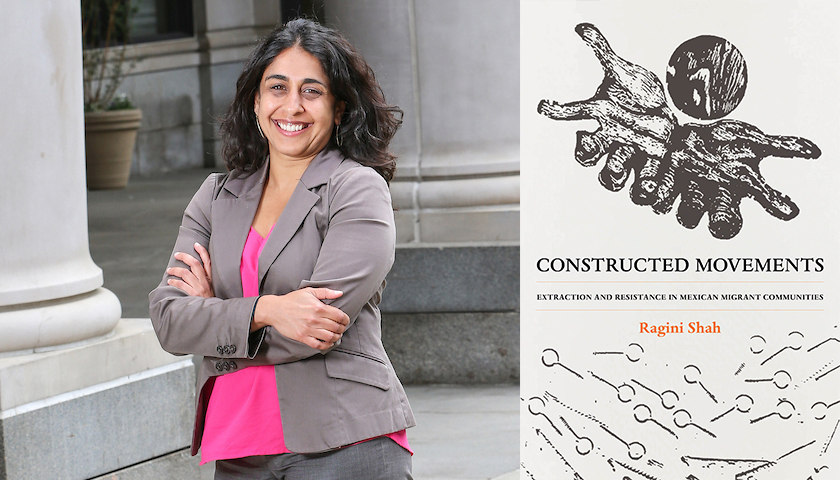A View on the Forces Driving Mexican Migration

When Elfego left his small town in Mexico's Mixteca region in 1985 at age sixteen, crossing the U.S. border was relatively simple. He walked across near Tijuana, was caught and released by Border Patrol, then tried again successfully. Over the next three decades, he would make half a dozen successful journeys north, laboring in California and Oregon's produce fields, doing gardening work, and building homes in Washington State to help pay for his children's education back home.
By his mid-40s, his body could no longer handle the grueling work, forcing him to return before he could save enough to send his children to high school. His eldest son Jaime would later follow the same path north, but in a changed landscape–facing exponentially increased expenses and dangers to cross the border.
This intergenerational story of migration is one of many compelling narratives in "Constructed Movements: Extraction and Resistance in Mexican Migrant Communities (University of California Press)" a new book by Suffolk Law Professor Ragini Shah that seeks to reframe how we understand Mexican migration to the United States.
Through extensive fieldwork across four Mexican states between 2012 and 2017, Shah director of Suffolk Law’s Immigration Justice Clinic, develops a provocative thesis: migration isn't just influenced by economic forces—it is itself a form of extraction, as systematic as the removal of oil or minerals from the global South.
Shah argues that beginning in the 1980s, policies pushed by international banks, the International Monetary Fund, and U.S. and Mexican elites worked in concert to dislocate people from their communities, channel them into exploitative industries in the United States, and render their communities dependent on the money they send home. It's a cycle that enriches various actors—from U.S. agribusiness to private prison companies running immigration detention centers—while entrenching the poverty that spurs migration in the first place, she argues.
The human toll of this system emerges vivid and raw in Shah's reporting. There's Serena, who migrated to North Carolina in 1997 on a temporary visa to work as a jaibera (crab cleaner) to help pay for her older children's education, facing racist abuse from her manager. Her story, Shah argues, exemplifies how IMF-mandated policies in the 1980s and 1990s deliberately suppressed wages in Mexico's fishing, agricultural, and manufacturing sectors—causing real wages to plummet by 40 to 50 percent.
While the remittances migrants send home help individual families afford necessities, education, and housing, Shah argues that the “remittance-led development model” favored by the IMF entrenches community-wide poverty and dependence on migration, creating a cycle that continues to displace workers into exploitative industries in the United States. That is because, Shah says, remittances don't address the structural gaps created by decades of disinvestment.
The limitations of remittances are explained poignantly by Don Santos, a man who, like Elfego, migrated back and forth to the U.S. for over twenty years. According to Don Santos, “people think migration is a benefit, but it does nothing for the whole pueblo. If we migrate, we can build a house, buy a car, but in my pueblo, we lack water and the school does not have electricity.” Shah contends the gaps Don Santos points to are a result of intentional policy decisions that gutted support for small farmers and rural areas in general which favoring large export-oriented corporations in agriculture and manufacturing.
Yet Shah's book is not merely a catalog of hardship. She documents how communities, particularly Indigenous groups, are fighting back. In Oaxaca, the Frente Indígena de Organizaciones Binacionales (Indigenous Front of Binational Organizations) works to create local employment so migration becomes a choice rather than a necessity. In Tlaxcala, the women-led Centro de Atención de Familias Migrantes e Indígenas (Indigenous Migrant Family Care Center) helps families cope with separation while building alternative economic projects rooted in traditional knowledge.
These efforts point toward Shah's broader argument about what solutions might look like. Rather than more expansive border enforcement or guest worker programs controlled by employers, she advocates for redistributing resources from immigration control to community development, and giving migrants more basic rights in what are often unforgiving and dangerous working conditions.
The book's appearance feels especially timely as migration again dominates headlines. Shah suggests that focusing on "border crises" misses the deeper story of how migration patterns are constructed through policy choices that benefit some while extracting from others. Her work, she says, challenges readers to imagine different choices—ones that might allow people like Elfego and his son to thrive in their communities rather than being forced to leave them.
As one Indigenous organizer tells Shah: "We need the government to see us and invest in us." It's a simple demand, says Shah, but it gets at the heart of the book’s message: Migration is not inevitable, but rather the product of deliberate decisions that could be made in ways that are both pragmatic and humane.



